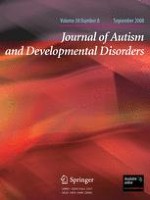01-09-2008 | Original Paper
Electronic Screen Media for Persons with Autism Spectrum Disorders: Results of a Survey
Gepubliceerd in: Journal of Autism and Developmental Disorders | Uitgave 8/2008
Log in om toegang te krijgenAbstract
Social and anecdotal reports suggest a predilection for visual media among individuals on the autism spectrum, yet no formal investigation has explored the extent of that use. Using a distributed questionnaire design, parents and caregivers report on time allotted toward media, including observable behaviors and communicative responses. More time was spent engaged with electronic screen media (ESM) than any other leisure activity. Television and movie viewing was more popular than computer usage. Across media platforms, animated programs were more highly preferred. Prevalent verbal and physical imitation was reported to occur during and following exposure to ESM. Clinical implications to strategically incorporate ESM into learning approaches for children with autism spectrum disorders (ASD) are provided.
